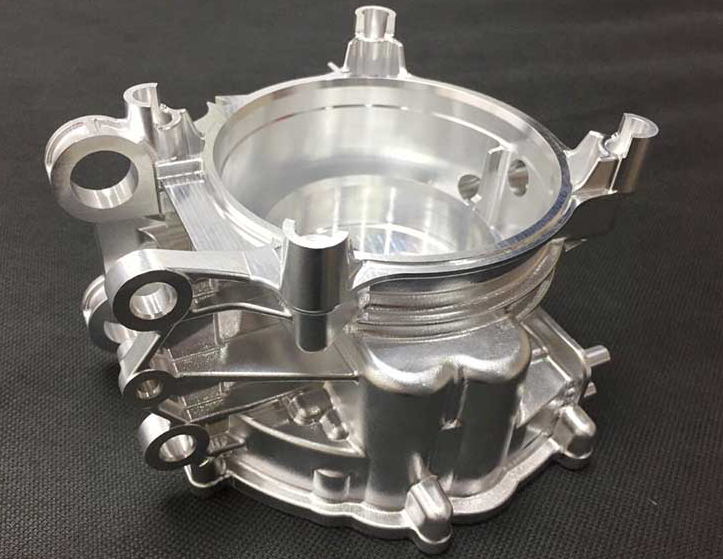The Ultimate Guide To Stahl Specialty Company
The Ultimate Guide To Stahl Specialty Company
Blog Article
Things about Stahl Specialty Company
Table of ContentsStahl Specialty Company Fundamentals ExplainedOur Stahl Specialty Company IdeasThe smart Trick of Stahl Specialty Company That Nobody is Talking AboutMore About Stahl Specialty CompanyThe smart Trick of Stahl Specialty Company That Nobody is Talking About
The refined difference depends on the chemical web content. Chemical Contrast of Cast Light weight aluminum Alloys Silicon advertises castability by reducing the alloy's melting temperature and boosting fluidness throughout casting. It plays an important function in enabling elaborate molds to be loaded properly. Furthermore, silicon contributes to the alloy's strength and put on resistance, making it beneficial in applications where longevity is crucial, such as automotive components and engine parts.It likewise boosts the machinability of the alloy, making it simpler to refine into completed items. This way, iron adds to the overall workability of light weight aluminum alloys. Copper enhances electric conductivity, making it beneficial in electric applications. It likewise enhances rust resistance and contributes to the alloy's total stamina.
Manganese contributes to the toughness of light weight aluminum alloys and improves workability. It is typically made use of in functioned aluminum products like sheets, extrusions, and profiles. The existence of manganese help in the alloy's formability and resistance to fracturing during fabrication processes. Magnesium is a light-weight component that supplies stamina and impact resistance to aluminum alloys.
It allows the production of lightweight components with superb mechanical properties. Zinc enhances the castability of aluminum alloys and aids regulate the solidification procedure throughout spreading. It enhances the alloy's stamina and firmness. It is often found in applications where intricate shapes and great details are necessary, such as decorative castings and specific automobile components.
A Biased View of Stahl Specialty Company
Because aluminum-silicon alloys have great spreading residential properties, high gas properties, basic procedures, and exceptional deterioration resistance, aluminum-silicon alloys are most commonly utilized in the die-casting sector in the house and abroad. At the exact same time, aluminum-silicon alloys are also reasonably early and commonly acknowledged alloys created and used in die-casting. After continual research study and renovation, most of the current worldwide mainstream aluminum-silicon alloys have actually been completed and are absolutely nothing more than A356, A360, A380, ADC12, B390, and A413.
The primary thermal conductivity, tensile strength, return toughness, and elongation vary. Amongst the above alloys, A356 has the highest thermal conductivity, and A380 and ADC12 have the most affordable.

How Stahl Specialty Company can Save You Time, Stress, and Money.
In accuracy spreading, 6063 is well-suited for applications where complex geometries and top quality surface area finishes are extremely important. Examples include telecommunication rooms, where the alloy's superior formability enables for smooth and cosmetically pleasing designs while preserving architectural honesty. Similarly, in the Illumination Solutions sector, precision-cast 6063 components create stylish and reliable lights components that require elaborate shapes and great thermal performance.
(https://www.reverbnation.com/stahlspecialc)
The A360 shows exceptional prolongation, making it perfect for facility and thin-walled parts. In precision casting applications, A360 is fit for industries such as Customer Electronic Devices, Telecommunication, and Power Tools.

In accuracy spreading, light weight aluminum 413 shines in the Customer Electronics and Power Devices markets. This alloy's premium rust resistance makes it an outstanding choice for exterior applications, ensuring durable, sturdy items in the stated sectors.
The 4-Minute Rule for Stahl Specialty Company
As soon as you have actually chosen that the aluminum die casting process is appropriate for your job, a critical following action is selecting one of the most proper alloy. The light weight aluminum alloy you select will significantly affect both the casting process and the homes of the last product. Due to this, you must make your choice very carefully and take an educated strategy.
Establishing one of the most ideal light weight aluminum alloy for your application will mean weighing a wide array of characteristics. These comparative alloy features adhere to the North American Die Casting Organization's standards, and we have actually separated them right into two categories. Foundry near me. The first group addresses alloy features that impact the manufacturing procedure. The 2nd covers attributes affecting the homes of the end product.
The alloy you choose for die casting straight impacts several facets of the spreading process, like how easy the alloy is to deal with and if it is prone to casting flaws. Hot fracturing, likewise known as solidification splitting, is a common die spreading flaw for light weight aluminum alloys that can result in interior or surface-level rips or cracks.
The Ultimate Guide To Stahl Specialty Company
Specific aluminum alloys are much more vulnerable to warm breaking than others, and your selection must consider this. Another typical issue discovered in the die spreading of aluminum is die soldering, which is when the cast sticks to the die walls and makes ejection difficult. It can harm both the actors and the die, so you need to look for alloys with high anti-soldering buildings.
Rust resistance, which is already a notable feature of light weight aluminum, can vary substantially from alloy to alloy and is an essential particular to think about depending on the ecological conditions your item will certainly be exposed to. Put on resistance is one more residential property typically sought in light weight aluminum products and useful reference can separate some alloys.
Report this page